#fashion history posting
Text
Jessamine's design has always intrigued me. the stark, full black suit and tall collar are pretty obvious status symbols. black was for the longest time an incredibly expensive colour of fabric due to how difficult it was to achieve proper rich blackness during the dyeing process and the collar, while most likely just a trend in Dunwall fashion inspired by the 1890s high collars can be read as lace, especially in some concept art, which is hard to care for and needs to be starched to hell and back to keep nice and stiff for a collar like that
but what I find a lot more curious about this is that the clothes appear very much inspired by Spanish renaissance fashion
which, honestly, would make sense with the real world inspiration. 19th century was obsessed with the past, with the romanticized medieval and renaissance times, and it was quite common to see fashion inspired by times long past (I mean, just look at Worth. the man invented haute couture and there is so much influence of medieval and Elisabethan fashion in his designs). it was also a thing for rich families to just kinda... invest in recreations of historical pieces of clothing and LARP in them.
Jessamine's clothes, in particular, reminded me of Spanish court dresses. especially of the portraits of Anne of Austria and Elisabeth of Valois

obsessed with those slit sleeves. too bad Jessamine didn't go the extra mile to have the sleeves hang long and heavy around her arms but they were more form fitting
there is also something to be said about the tall white (possibly starched lace) collar and the style of clasps used on her clothes
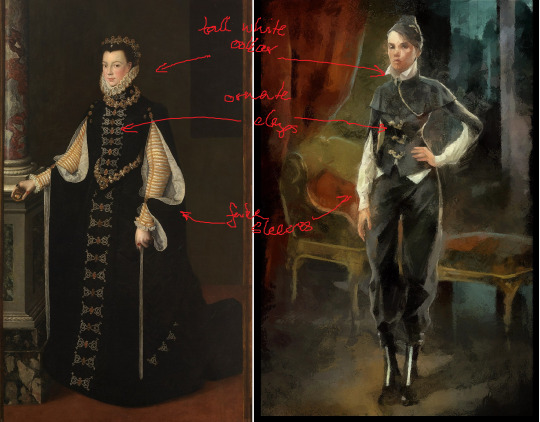
the mini cape thing she has on top is more similar to the style of capes worn by men in renaissance, but yeah, of course she reminded me of a Spanish princess when this is one of the most given example portraits for this style
I wonder if this was an intentional choice on the designer's side or if they were just inspired by the revivalism present in 19th century fashion. what really makes me consider that though is that one of her earlier designs has those sleeves much, Much more pronounced and obvious

oh the things that could have been...
still, it makes me wonder: if this was intentional, what does this tell us about Jessamine, and the history of the Isles themselves?
#dh#dishonored#jessamine kaldwin#fashion history posting#I am not normal about this gown#me and sin even had an au where her and corvo are part of a fashion history reenactment group#still I wonder. does she just like the style? or is she just a little insane about fashion history like I am?#bias admission I spent two years working on a comic that had its entire aesthetic based around renaissance and its 19th century revival#so I might be seeing things where there are none#either way you are welcome Ive been meaning to make this post for Months at this point#we dont know if artificial black dye was already a thing at the time of DH1#another curious thing though!#since this is before silvergraphs were invented Jessamine wouldve been painted in a Particularly Nice Outfit#like if youre gonna pay someone to paint you youre gonna pose in your best garb#and its the same fit she wore to welcome corvo back which means she dressed up nice for him#which I find really fucking cute#anyways heres my insane ramblings I hope you enjoyed
114 notes
·
View notes
Text
i'm gonna get my fashion history stan licence revoked for this, but I fucking hate the 1920s djfnkdjgkfjf 😭😭😭 i mean, don't get me wrong, i've seen pretty fashion plates and magazines and all that, but the rest is just... a hot mess 😭
#and have yall seen the diet guides??? there are relatively healthy ones ofc but the others are so.... eating disord3r lite dhfbkdjf 😭#fashion history posting
4 notes
·
View notes
Text
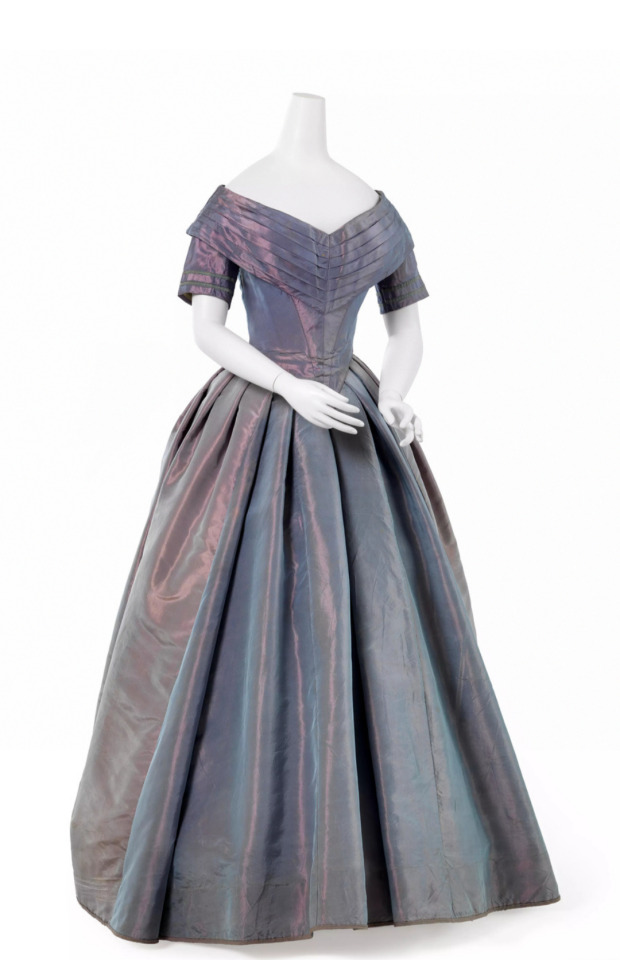

Ball gown, 1840-41
Maker: Unknown
From the collection of Wien Museum
#That's the most beautiful fabric I've ever seen#dress#clothing#historical dress#historical fashion#1840s#19th century fashion#ballgown#garments#costuming#historical costuming#victorian era#victorian fashion#19th century#my post#fashion#period fashion#historical clothing#fashion history#old fashion#iridescent#iridesence#fairy aesthetic#fairycore#light academia aesthetic#light academia
15K notes
·
View notes
Text







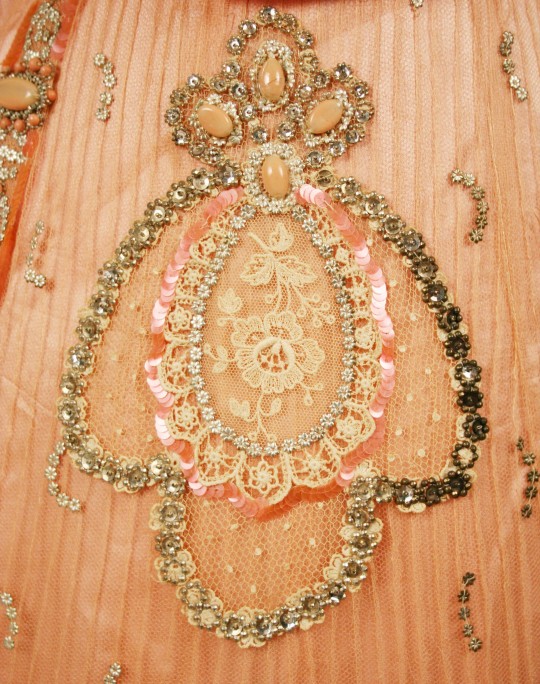


Ball gown, 1900–1903. French. Silk.
The MET Museum
#edwardian#edwardian era#edwardian fashion#dress#ball gown#fashion history#historical fashion#20th century#long post#longpost
1K notes
·
View notes
Text
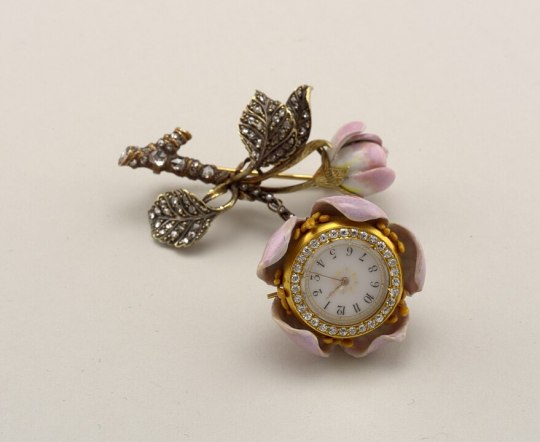
Lapel watch, USA, c. 1889, Cooper–Hewitt, Smithsonian Design Museum
#!!!! god this fucks!#vintage jewellery#vintage watches#timepieces#watches#historical fashion#fashion history#19th century fashion#19th century#victorian era#my post
1K notes
·
View notes
Text
Early 18th (and late 17th) century fashions are so under-utilized in vampire media and I think it's a damn shame.
I don't actually think I've ever seen a single image of a vampire character in an early 18th century suit. Hardly any movies set in that era either, and hardly any historical costumers who do it.
(Even my beloved gay pirate show set in 1717 takes nearly all of its 18th century looks from the second half of the century. Not enough appreciation for baroque fashion!!)
Yes I love late 18th century fashion as much as anyone, and 19th century formal suits are all very well and good, but if you want something that says old, dead, wealthy, and slightly dishevelled, then the 1690's-1730's are where it's at.
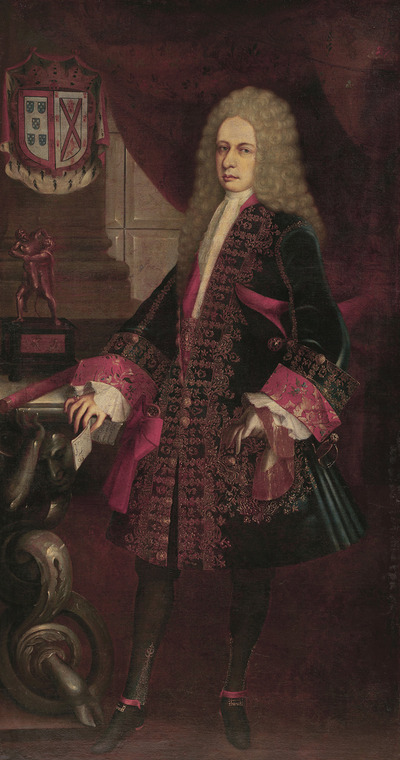
(Retrato del Virrey Alencastre Noroña y Silva, Duque de Linares, ca. 1711-1723.)
There was so much dark velvet, and so many little metallic buttons & buttonholes. Blood red linings were VERY fashionable in this era, no matter what the colour of the rest of the suit was.

(Johann Christoph Freiherr von Bartenstein by Martin van Meytens the Younger, 1730's.)
The slits on the front of the shirts are super low, they button only at the collar, and it's fashionable to leave most of the waistcoat unbuttoned so the shirt sticks out, as seen in the above portraits.

(Portrait of Anne Louis Goislard de Montsabert, Comte de Richbourg-le-Toureil, 1734.)
Waistcoats are very long, coats are very full, and the cuffs are huge. But the sleeves are on the shorter side to show off more of that shirt, and the ruffles if it has them! Creepy undead hands with long nails would sit so nicely under those ruffles.
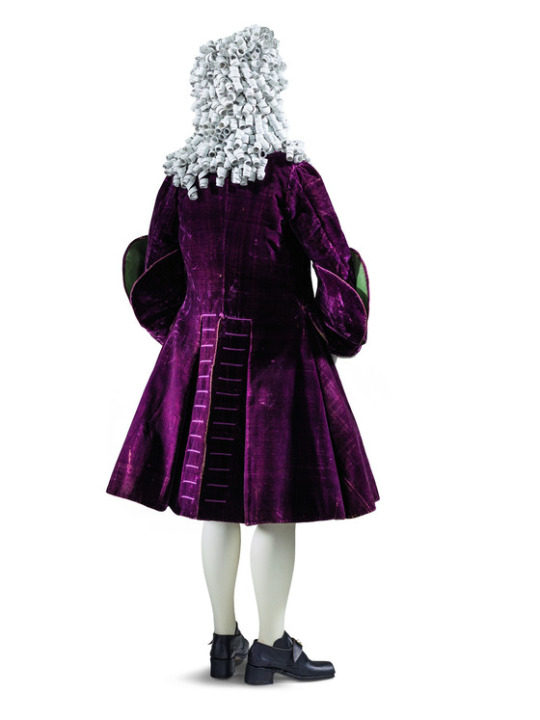
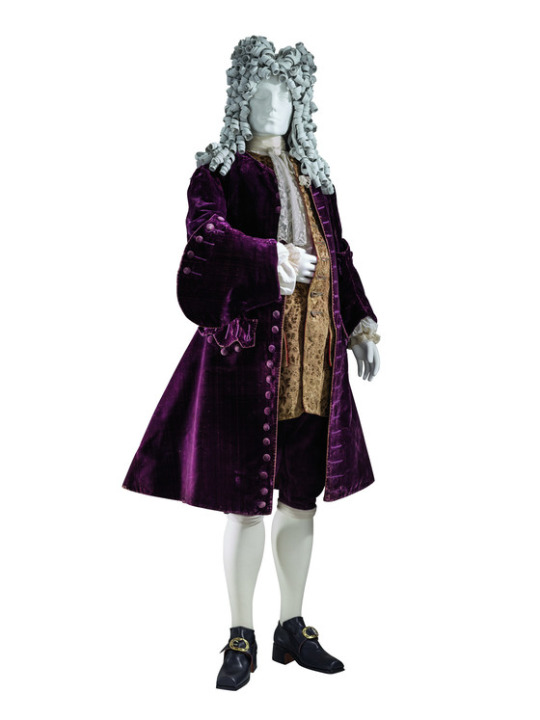
(1720's-30's, LACMA)
Embroidery designs are huge and chunky and often full of metallic threads, and the brocade designs even bigger.
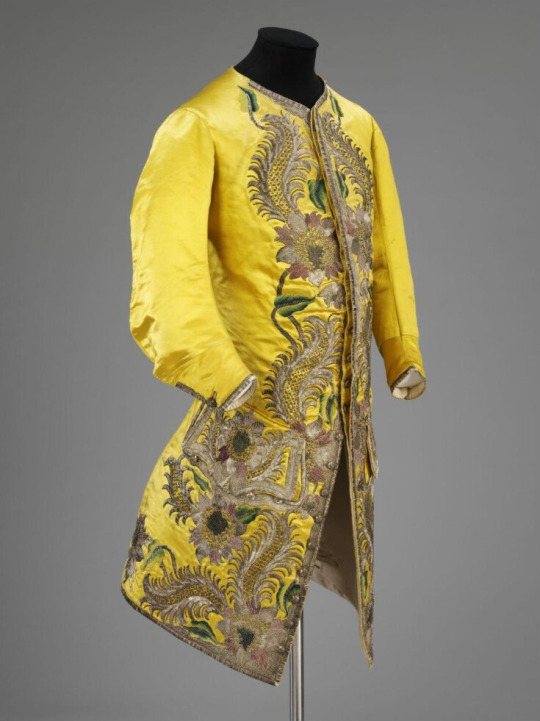
(1730's, V&A, metal and silk embroidery on silk satin.)
Sometimes they did this fun thing where the coat would have contrasting cuffs made from the same fabric as the waistcoat.
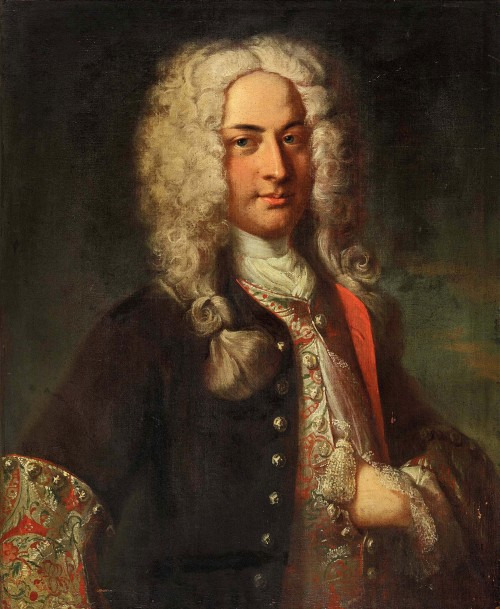
(Niklaus Sigmund Steiger by Johann Rudolf Huber, 1724.)
Tell me this look isn't positively made for vampires!
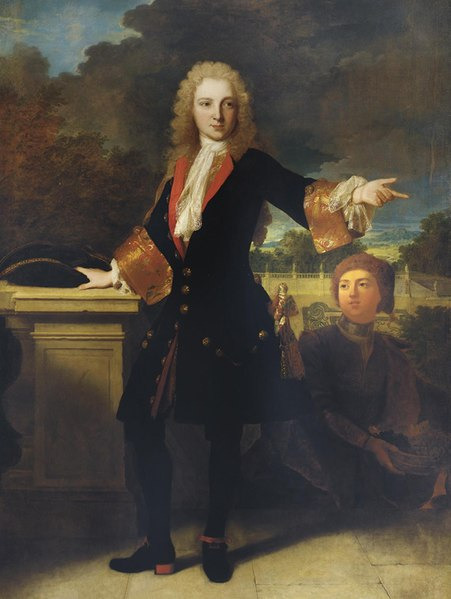
(Portrait of Jean-Baptiste de Roll-Montpellier, 1713.)
(Yeah I am cherry-picking mostly red and black examples for this post, and there are plenty of non-vampire-y looking images from this time, but you get the idea!)
And the wrappers (at-home robes) were also cut very large, and, if you could afford it, made with incredible brocades.
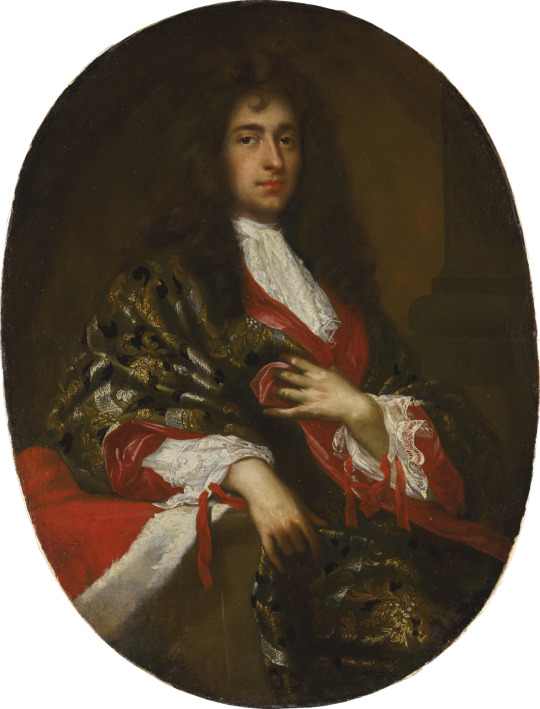
(Portrait of a nobleman by Giovanni Maria delle Piane, no date given but I'd guess maybe 1680's or 90's.)
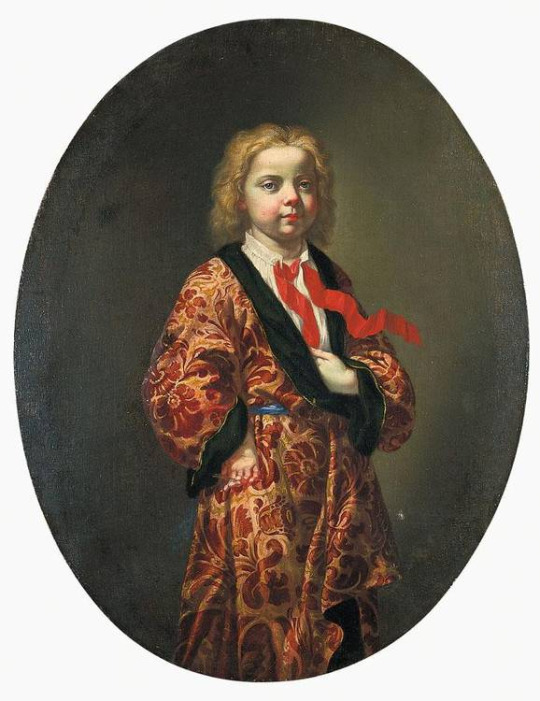
(Circle of Giovanni Maria delle Piane, no date given but I'd guess very late 17th or very early 18th century.)
Now that looks like a child who's been stuck at the same age for a hundred years if I ever saw one!
I don't know as much about the women's fashion from this era, but they had many equally large and elabourate things.

(1730's, Museo del Traje.)

(Don't believe The Met's shitty dating, this is a robe volante from probably the 1720's.)

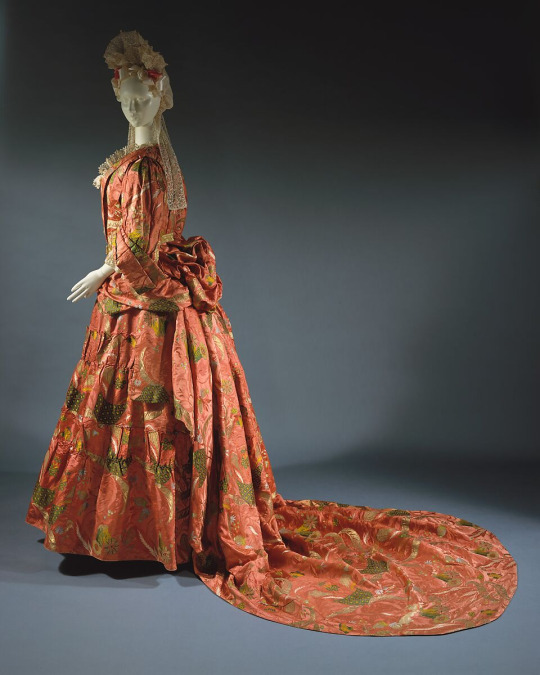
(Mantua, c. 1708, The Met. No idea why they had to be that specific when they get other things wrong by entire decades but ok.)

(Portrait of Duchess Colavit Piccolomini, 1690's.)

(Maria van Buttinga-van Berghuys by Hermannus Collenius, 1717.)
Sometimes they also had these cute little devil horn hair curls that came down on either side of the forehead.
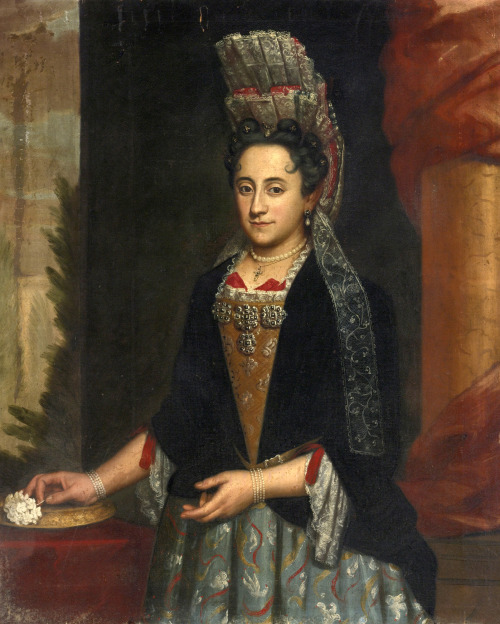
(Viago in drag Portrait of a lady, Italian School, c. 1690.)
Enough suave Victorian vampires, I want to see Baroque ones! With huge wigs and brocade coat cuffs so big they go past the elbow!
#long post#vampires#fashion#history#18th century#17th century#someday. SOMEDAY I will make a black/red/dark orange/metallic gold 1720's suit#I've got nearly all the materials I just need to:#1. Learn how to make early 18th century metallic thread buttons‚ preferably without having to buy the super expensive kind of thread#2. get a wig and style it appropriately
2K notes
·
View notes
Text



Met Costume Institute
Walking dress. British. ca. 1830
#fashion history#historical fashion#antique#1800#1830s fashion#1830s#extant garments#met museum#floral#this is my absolute favorite 1830s dress but I don't know if it's been posted before
608 notes
·
View notes
Text
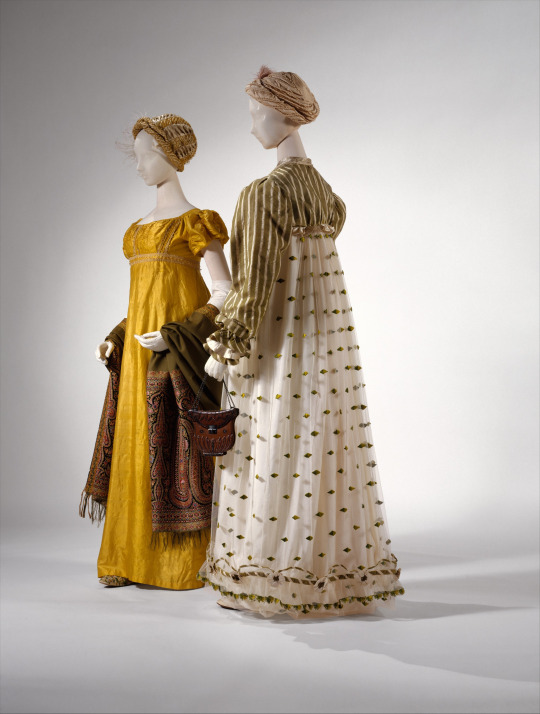
Two dresses. 1812–14 / c. 1820. British. Met Museum.
I love the yellow of the 1814 dress so much!
#historical fashion#fashion history#19th century#1810s fashion#1810s#1820s fashion#1820s#posts by me
447 notes
·
View notes
Text
articles about the “wild new trend” of piercing from the late ‘50s and early ‘60s are fascinating to read. a selection of excerpts:
- one doctor cautioned that girls with pierced ears would be “required to constantly wear earrings to hide the holes in their heads” (or you could just not be weird about a tiny dot on someone else’s earlobe?)
- Genevieve Dariaux, then director of the Nina Ricci couture house, said in 1965 that “Pierced ears are unthinkable for an elegant woman, and even more dreadful for a young girl.” bear in mind that, as I’ve said, earrings that made your ears LOOK pierced were still common. what the difference was, nobody has yet made plain
- lots of evidence that going to a doctor was the preferred “safe” method for piercing at the time. but many doctors refused to do it, or said they would but that they strongly discouraged patients from having the procedure done. this checks out with my mother’s experience in 1965- her schoolmate’s anesthesiologist father did free piercing for all his daughter’s friends
- some teenagers around 1965 called clip and screwback earrings “chicken earrings” (implying that the wearers were too scared of pain to get their ears pierced, I think)
- one advice column, also from 1965, implied that pierced ears were just a passing fad. the previous several centuries of western history would like a word, Mx. Columnist...
- A GIRL WITH RESTRICTIVE PARENTS BRINGING UP THE ARGUMENT THAT HER GRANDMOTHER HAD PIERCED EARS. YES. FINALLY SOMEONE REALIZED THE LOGICAL FALLACIES HERE. the argument against that is, indeed, a sort of “that was the Bad Old Days and we know better now” deal as some other commenters have hypothesized
- one article mentions that the trend could be part of the Victorian revival that was just becoming popular in the mid-60s, which is a fascinating thought I’ve never considered before
- many doctors complaining that they were suddenly being called upon to pierce ears despite not really knowing how. this is interesting, because before the Great Ear-Piercing Taboo, jewelers offering piercing services were more like modern piercers than Claire’s employees (and doctors weren’t involved at all unless an infection set in). descriptions I’ve read of Victorian piercer-jewelers mention a lot of things we’re familiar with today- needles designed with a hollow for inserting the starter jewelry, for example, and even “freezing” solutions to numb the earlobe. so in those early resurgence days, going to a long-established jewelry store for your piercing might actually have been a better option than a doctor’s office
- two young women in a 1964 Canadian article (from Calgary) mention that they think screwback earrings look cheap and gaudy, and the pierced version is more conservative and tasteful, in an interesting reversal of mainstream thought
- a newspaper columnist saying pierced ears give him “the wim-wams,” so they are to be avoided. whatever the hell that means
- a LOT of people seem to think that ear piercing was popular in the Victorian era because wealthy women didn’t want to lose their expensive jewelry. sorry folks- my collection of Victorian costume earrings (all pierced) says otherwise
- much confusion as to why modern girls want to do something so old-fashioned
- one woman marvels at how comfortable it is to wear earrings in pierced ears, as opposed to clips and screwbacks. I feel infinitely blessed, as an earring-lover, to have been born when I could escape the scourge of ear-vises altogether
- apparently an eccentric elderly man on Salt Spring Island, British Columbia, literally bribed all the women of the community to pierce their ears because he liked the way it looked. one of them mentioned that she held out for $25- $244 CAD or $188 USD in today’s money. all because some rich Victwardian codger had a very specific fetish
- this absolutely incredible response of an Indian diplomat’s wife when asked, in New York, why she wore a diamond nose stud: “Because I feel [diamonds] become me more than rubies or emeralds.” QUEEN
- “when the fad changes, as it indubitably will-” are you certain of that, ma’am
11K notes
·
View notes
Text
One of my favorite hobbies is sending increasingly salty snapchats about the historical accuracy of romance novel covers. Here’s a few of my faves:
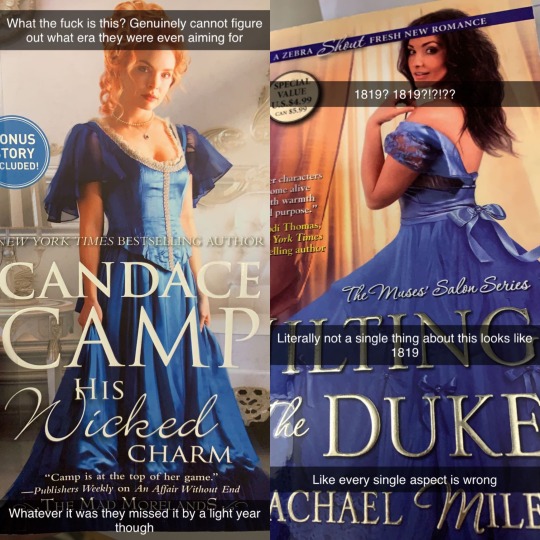


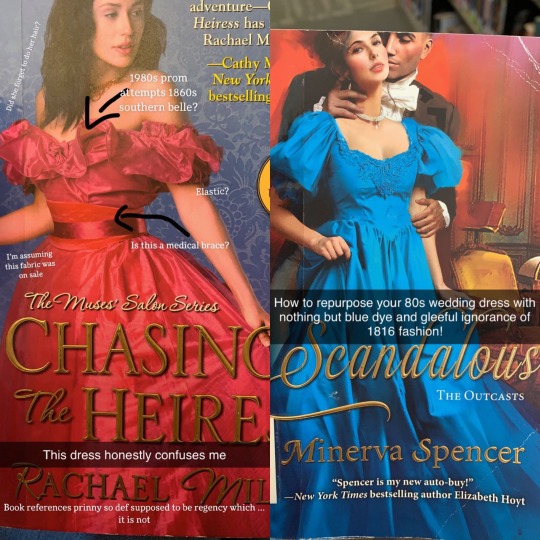

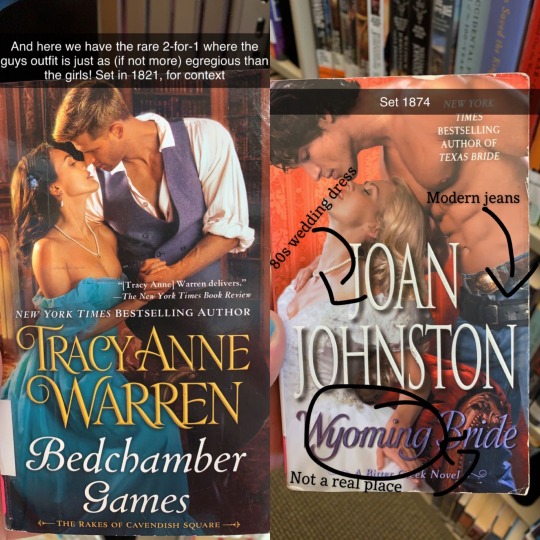

And, drumroll for the worst one I’ve ever seen …

(Now with part 2 and part 3)
#my post#fashion history#sort of#historical fashion#to clarify: I’m not saying wyomings not a real place bc it’s 1874#I’m saying it bc wyoming is fake#hope this helps <3#the last one keeps me up at night
11K notes
·
View notes
Photo

If no one attempts to recreate this actual Gilded Age look from the 1883 Vanderbilt Ball for the MET Gala, then what’s even the point?
#PUSS#met gala#1880s#fashion history#I should really link my post about Victorian cat fashion to this but I'd have to go find it
9K notes
·
View notes
Text
avid historical fashion enthusiast here to remind you that corsets and stays were not created as ancient methods of torture.
sure, i am not going to deny that some women did tightlace their corsets — however, not everyone was struggling to breathe and fainting everywhere like fucking goats. part of a corset’s purpose was aesthetic and fashion, but it was also for support. most women still lived their lives, they weren’t just lying around being damsels in distress with itty bitty waists and zero lung capacity.
i just think it’s scary how hollywood has popularized the misconception that corsets are made to be tightlaced — for example, if someone who isn't well educated about historical fashions buys a corset for a costume, they might think it’s normal if they can’t breathe, and that’s dangerous. i cannot emphasize that enough.
when i was performing in a production of beauty and the beast earlier this year, some of the girls — my friends — were tightening their corsets to seriously dangerous extents, and that fucking scared me. i felt like a broken record telling them to loosen their corsets, but all they knew was pirates of the caribbean (that one scene pisses me off sO BAD) and bridgerton (i am NOT gonna start on the corset tightening scene in bridgerton s1, i do not need to get on that soap box).
if you read nothing else in this little rant of mine, read this:
if you cannot breathe while you are wearing a corset, something is wrong.
#historical fashion#fashion history#historical fiction#historical romance#corsets#19th century#this was brought on by a video i saw on instagram that aggravated me#o posts o'mine
928 notes
·
View notes
Note
I've seen a post you've reblogged and added to, among many things about women showing nipples. Can you recommend any ref material (articles, videos, etc.) are share your knowledge about this? Cause I'm curious about that, as nowadays going out in a shirt without a bra makes you indecent, while in like 90s it was okayish? I wonder how it was in previous centuries.
There is a really cool academic paper about bare breast dresses in 17th century England specifically. I think anyone can read it by creating a free account.
Abby Cox also has a good video about the cleavage during the past 500 years in which she goes through also the nip slip phenomena.
I don't have other sources that specifically focus on this subject, though many sources about specific decades touch on it, but I do have my primary source image collection, so I can sum up the history of the bare nipple.
So my findings from primary source images (I could be wrong and maybe I just haven't found earlier examples) is that the Venetians were the first ones to show the nipple for courtly fashion. At the same time in other places in Europe they sported the early Elizabethan no-boob style that completely covered and flattened the chest. In the other corners of Italy the necklines were also low but less extreme. Venetian kirtle necklines dropped extremely low as early as 1560s and they combined extremely sheer, basically see-through partlets with their kirtle. First example below is a 1565-70 portrait of a Venetian lady with the nipples just barely covered waiting slip into view with a movement of arm. There was an even more extreme version of this with the kirtle being literally underboob style, still with a sheer doublet. Though I believe this was not quite for the respectable ladies, since I have only seen it depicted on high class courtesans. They were not exactly respectable ladies, but they did have quite good social position. The second example is a 1570s depiction of a courtesan, which is revealed by the horned hairstyle. By the end of the century this underbust style with only see through fabric covering breasts, had become respectable. In the last example it's shown on the wife of the Venetian doge in 1597.
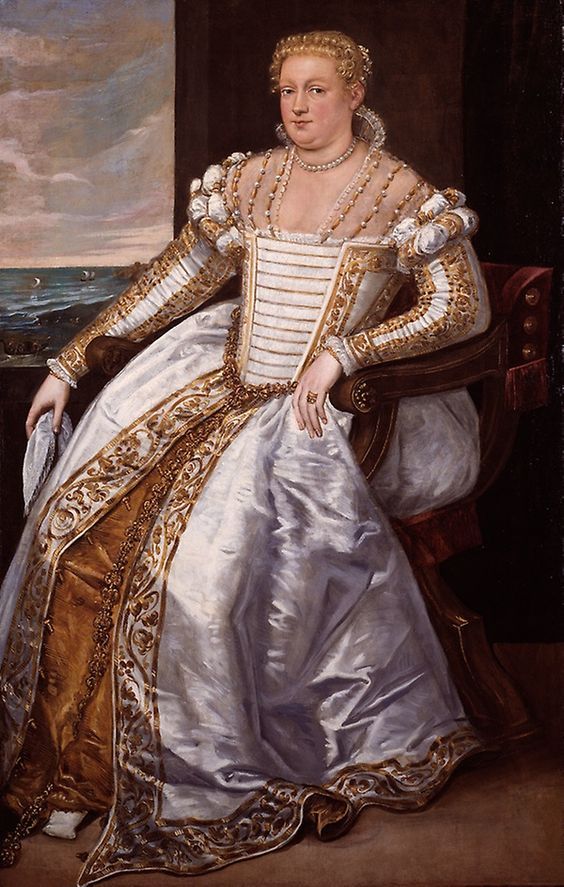
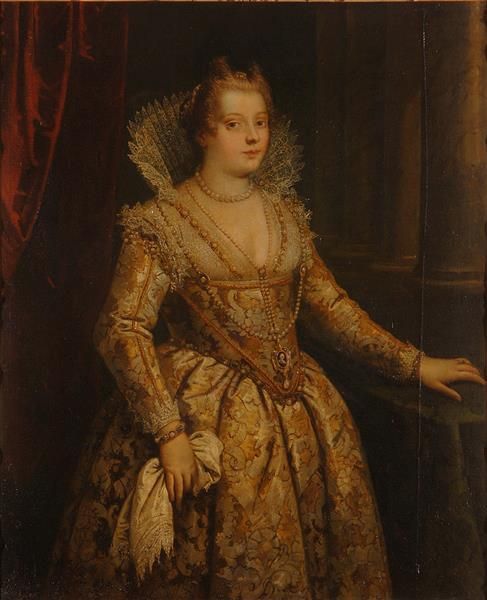

Around the same time, at the very end of 1500s, the extremely low cut bodice fashion enters rest of Europe. The low cut style was present in the bodices of all classes, but the nipple was really only an aristocrat thing. The lower classes would cover their breasts with a partlet, that was not sheer. Bare breast was ironically from our perspective a show of innocence, youthful beauty and virtue, and to pull off the style with respect, you also had to embody those ideals. Lower class women were considered inherently vulgar and lacking virtue, so a nipple in their case was seen as indecent. Bare boobs were also a sort of status symbol, since the upper class would hire wet nurses to breastfeed their children so they could show of their youthful boobs.
Covering partlets and bodices were still also used in the first decade of 1600s by nobles and the nip slip was mostly reserved for the courtly events. The first image below is an early example of English extremely low neckline that certainly couldn't contain boobs even with a bit of movement from 1597. The 1610s started around 5 decades of fashion that showed the whole boob. The first three were the most extreme. Here's some highlights: The second image is from 1619.
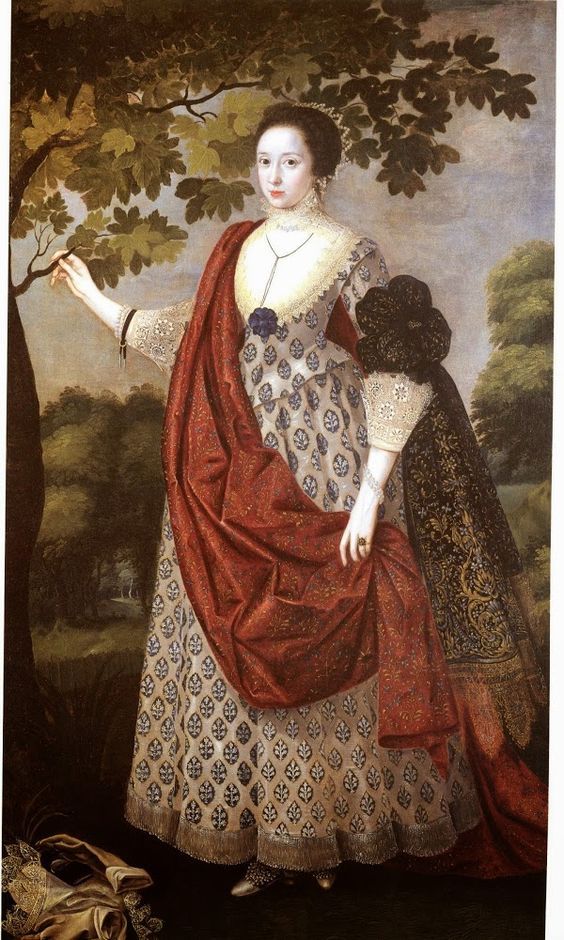

Here the first, very much showing nipples, from c. 1630. The second from 1632.
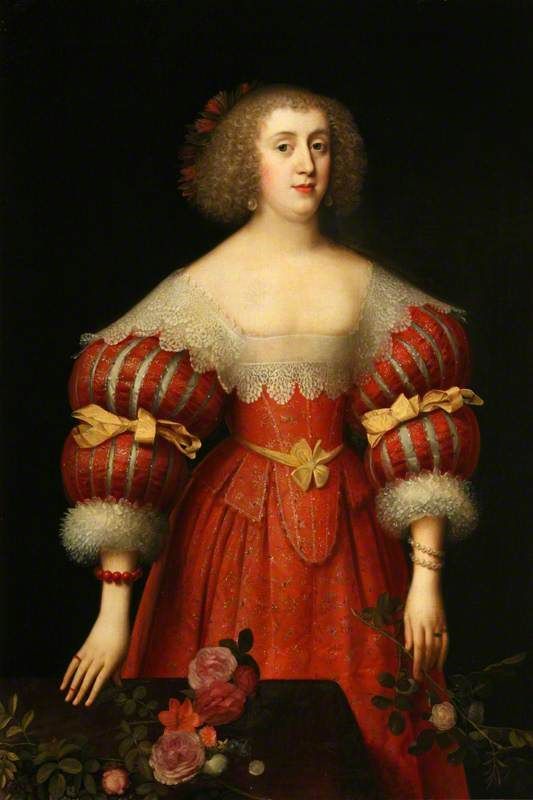
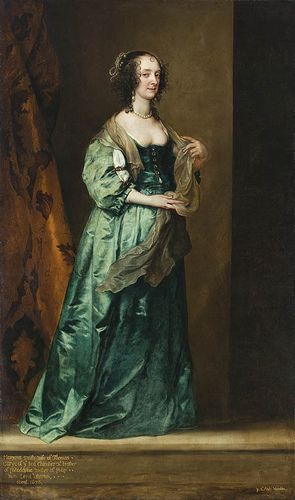
The neckline would slowly and slightly rise during the next decades, but nip slips were still expected. Here's an example from 1649 and then from 1650-55. In 1660s the neckline would get still slightly higher and by 1870s it was in a not very slippable hight. The necklines would stay low for the next century, though mostly not in boob showing territory, but we'll get there. But I will say that covering the neckline in casual context was expected. Boobs were mostly for fancy occasions. It was considered vain to show off your boobs when the occasion didn't call for it and covering up during the day was necessary for a respectable lady. You wouldn't want to have tan in your milk-white skin like a poor, and also they didn't have sun screen so burning was a reasonable concern.

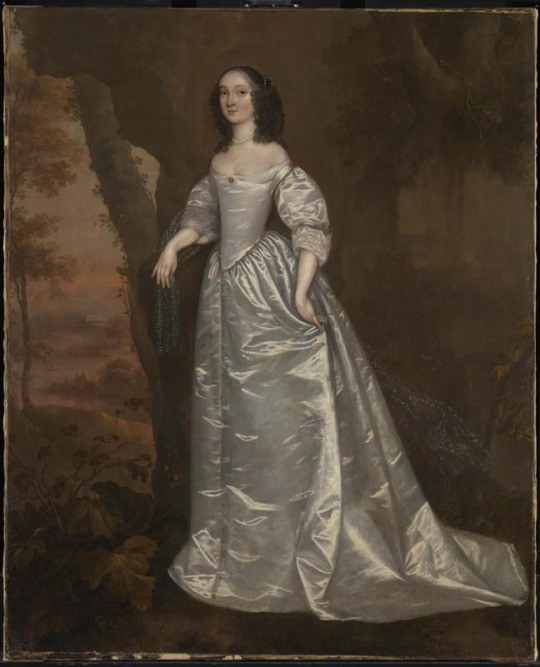
1720s to 1740s saw necklines that went to the nip slip territory, though they didn't go quite as low as 100 years earlier. The nipple was present in the French courtly fashion especially and rouging your nipples to enhance them was popular. Émilie Du Châtelet (1706-1749), who was an accomplished physicist and made contributions to Newtonian mechanics, was known in the French court to show off her boobies. An icon. Here she is in 1748. Here's another example from this era from 1728.
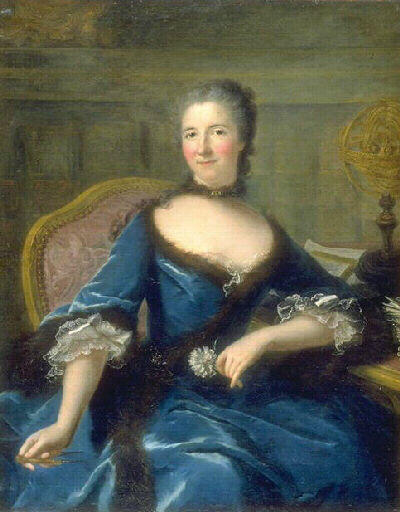
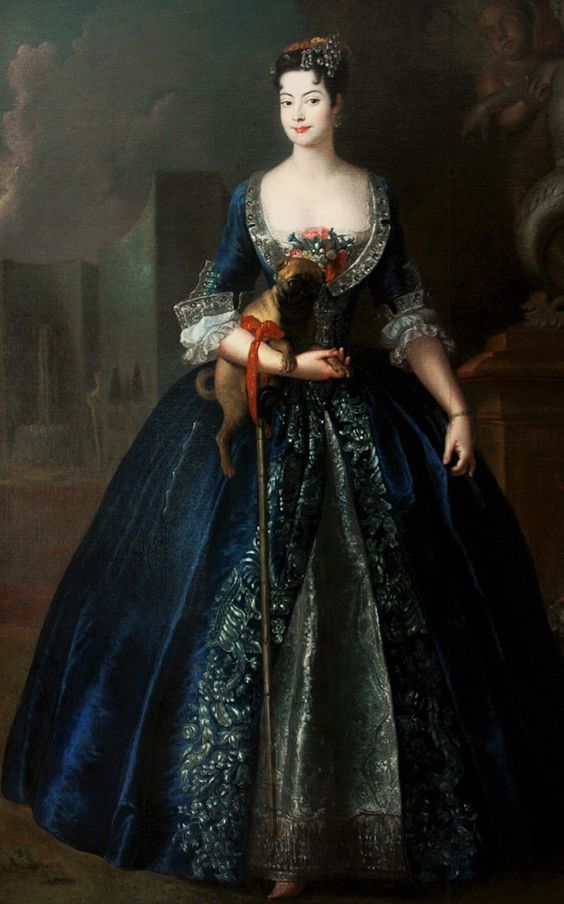
The Rococo neckline never got high, but in the middle of the century it was less low till 1770s when it plunged into new lows. In 1770s the fashion reached a saturation point, when everything was the most. This included boobs. The most boob visible. There was a change in the attitudes though. The visible boob was not a scandal, but it was risque, instead of sing of innocent and did cause offense in certain circles. I think it's because of the French revolution values gaining momentum. I talked about this in length in another post, mostly in context of masculinity, but till that point femininity and masculinity had been mostly reserved for the aristocracy. Gender performance was mostly performance of wealth. The revolutionaries constructed new masculinity and femininity, which laid the groundwork for the modern gender, in opposition to the aristocracy and their decadence. The new femininity was decent, moral and motherly, an early version of the Victorian angel of the house. The boob was present in the revolutionary imagery, but in an abstract presentation. I can't say for sure, but I think bare breasts became indecent because it was specifically fashion of the indecent French aristocracy.
Here's example somewhere from the decade and another from 1778. The neckline stayed quite low for the 1780s, but rose to cover the boobs for the 1790s.

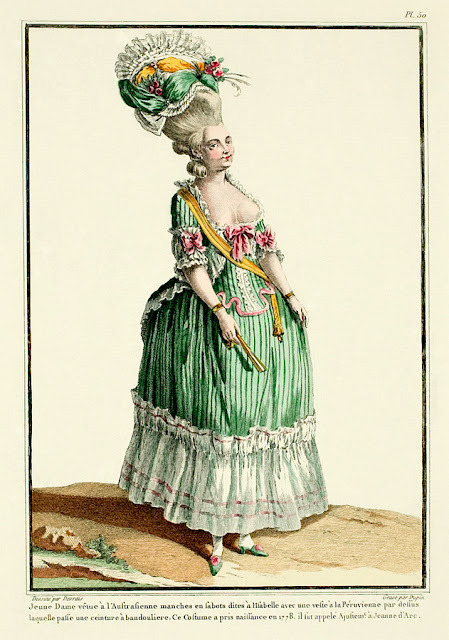
The nipple didn't stay hidden for long but made a quick comeback in the Regency evening fashion. It was somewhat scandalous by this point, and the nipple and sheer fabrics of the Regency fashion gained much scorn and satire. The styles that were in the high danger nip slip territory and those that allowed the nipple to show through fabric, were still quite popular. The sleeves had been mid length for two centuries, but in 1790s they had made a split between evening and day wear. The evening sleeves were tiny, just covering the shoulder. Showing that would have been a little too much. Like a bare boob? A risque choice but fine. A shoulder? Straight to the horny jail. (I'm joking they did have sheer sleeves and sometimes portraits with exposed shoulder.) But long sleeves became the standard part of the day wear. Getting sun was still not acceptable for the same reasonable and unreasonable reasons. Day dresses did also usually have higher necklines or were at least worn with a chemisette to cover the neckline. Fine Indian muslin was a huge trend. It was extremely sheer and used in multiple layers to build up some cover. There were claims that a gust of wind would render the ladies practically naked, though because they were wearing their underclothing including a shift, which certainly wasn't made from the very expensive muslin, I'm guessing this was an exaggeration. Especially though in the first decade, short underboob stays were fairly popular, so combined with a muslin, nipples were seen. Here's an early 1798 example of exactly that. The short stays did disappear eventually, but in 1810s the extremely small bodices did provide nip slip opportunities, as seen in this 1811 fashion plate.
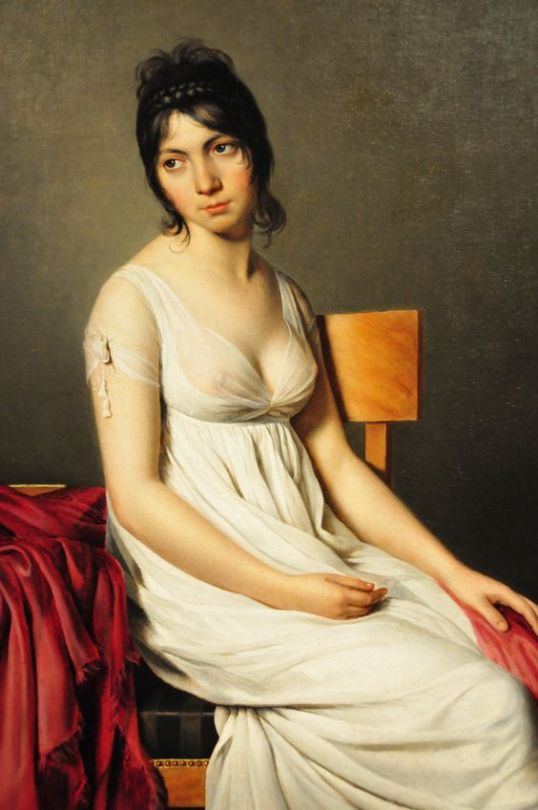
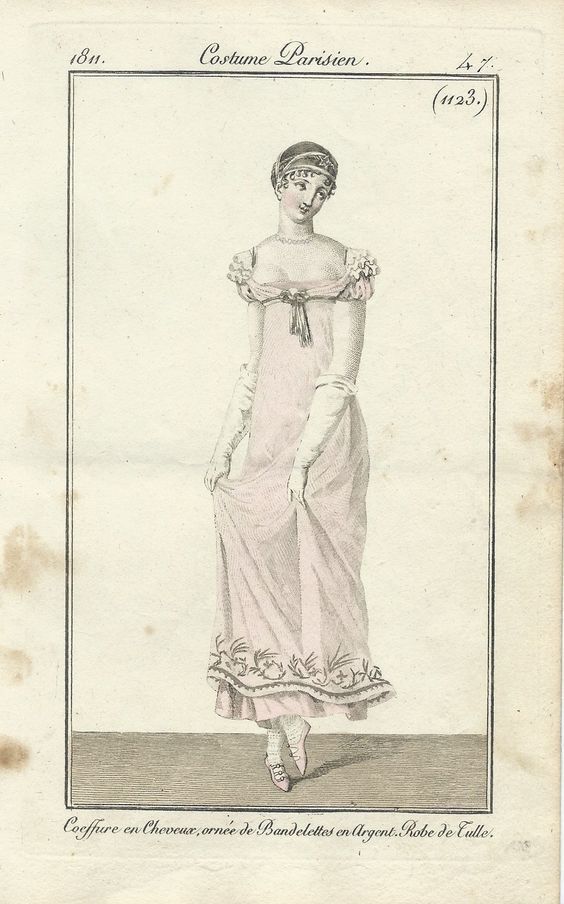
Victorian moralizing did fully kill the nip slip, though at least they were gender neutral about it. The male nipple was just as offensive to them. In 1890s, when bodybuilding became a big thing, bodybuilder men were arrested for public indecency for not wearing a shirt.
#there was also the new femininity aspect to regency nipple which had to do with breastfeeding becoming fashionable among upper class#it's about the whole motherly thing that came with the french revolution#i can't remember the book i read it from so i didn't go into it because i couldn't remember the details lol#but it did definitely have an effect to the fashion and to the perception of nipple#historical fashion#fashion history#history#dress history#fashion#answers#painting#fashion plate#renaissance fashion#elizabethan fashion#rococo fashion#baroque fashion#regency fashion#will tumblr prove itself to be again more prudish than elizabethans and label my post as mature content?#remains to be seen
504 notes
·
View notes
Text

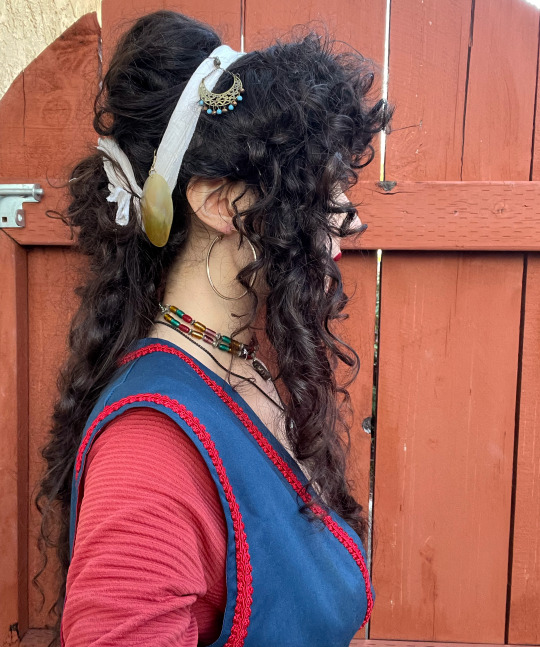


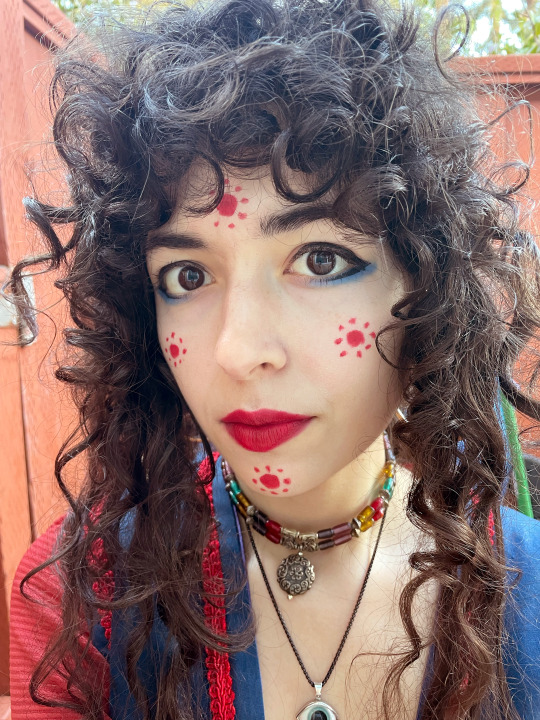

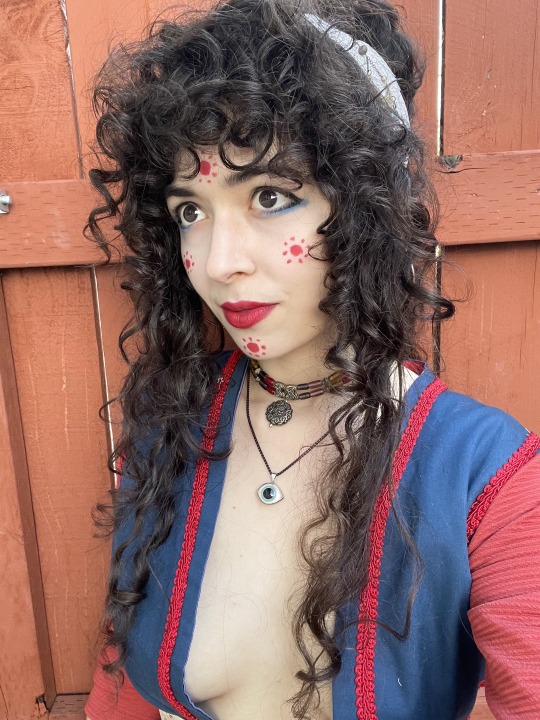
Here are some of the pictures of the Minoan/Mycenaean look I did yesterday! Mind you, it's all very generalized since I haven't made any clothing studies from these time periods yet, so I had just grabbed random clothes and jewelry from my closet that I could at least pass off as the ~vibe~ . I went for a pretty simple interpretation of makeup back then and ended up not really putting a whole lot on my face before the decorative elements, just a very thin amount of white foundation, but even so I figured my skin is pretty pale as it is that if this were historical I probably would have just been fairly bare faced anyway in a similar fashion. I tried to stay pretty close to how makeup might be applied back then and not go too anachronistic, and if I did it was for photographic or artistic purposes (namely, light contouring on my nose not for any sort of like, modern feature minimization, but to make sure my own Greek ethnic features weren't flattened by lighting levels or camera perspective)
Overall this was a really fun exploration of historic culture! Seeing the finished makeup on myself kind of brought over this cultural euphoria for me, even though many things have changed since ancient Mediterranean civilizations, there's almost a feeling of sameness in exploring the history of your heritage and seeing someone who looks or feels like you in ancient art. (But also a brief little disclaimer: the Mediterranean has been an extremely diverse region for thousands of years! I'm just one way of looking and that absolutely isn't representative of all people of Greece, neither then nor now!) I want to explore more historical fashions within this realm, and next time try a more extreme version of the makeup, something that feels more on the ceremonial side than casual like this one.
#wahoo! yippee!!! anywho enjoy and sorry i rambled a lot in the post im not good at being a brief person lol#historical fashion#ancient greece#minoan#mycenaean#greece#greek#history#antiquity#ancient greek#my cosplay
193 notes
·
View notes
Text


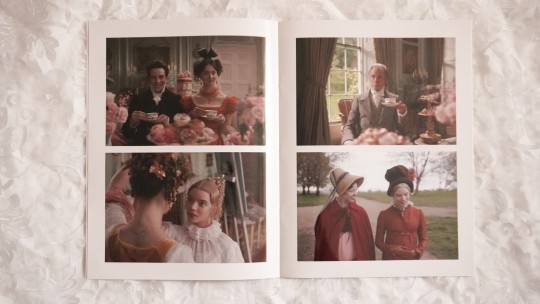

I got the dreamiest vinyl album from my favorite movie 🌷
#Emma#emma 2020#anya taylor joy#jane austen#regency#period fashion#period film#period drama#fashion history#autumn de wilde#music#soundtrack#art#regency fashion#regency era#regency period#historical fashion#olga's diary#my post
233 notes
·
View notes
Text
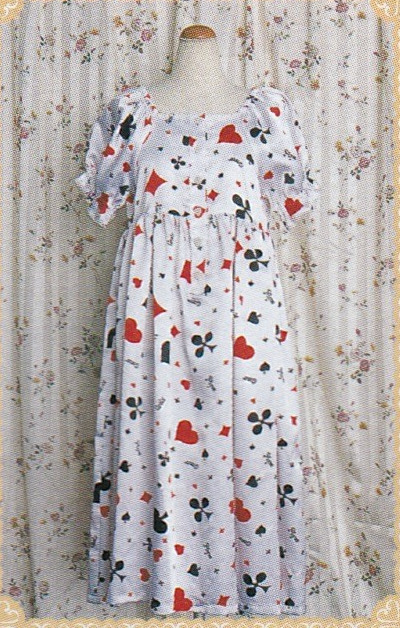

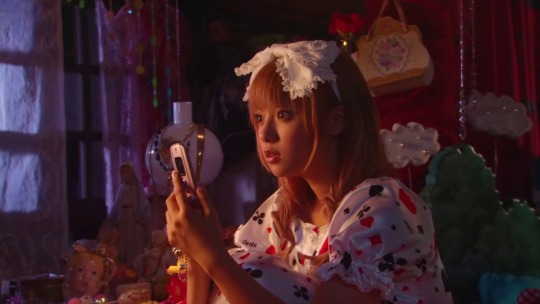
Hiromi Saruya x BABY, the Stars Shine Bright - Trump Print Satin OP (2004)
This one-of-a-kind dress was never released for commercial sale; designed by Hiromi Saruya and produced by BABY, the Stars Shine Bright for the 2002 film Shimotsuma Monogatari, we see Momoko pair this OP with a matching parasol and BABY brand alice bow. Due to being a stage costume, this piece is likely lost in circulation, in the hands of a second hand shop, costume and prop storage, or a private owner.
#hiromi saruya#kamikaze girls#shimotsuma monogatari#egl community#egl fashion#egl#elegant gothic Lolita#baby the stars shine bright#BtSSB#lolita history#sweet lolita#old school lolita#kawaii fashion#jfashion#alt fashion#harajuku fashion#costumery#trump satin print op#my post tag
360 notes
·
View notes